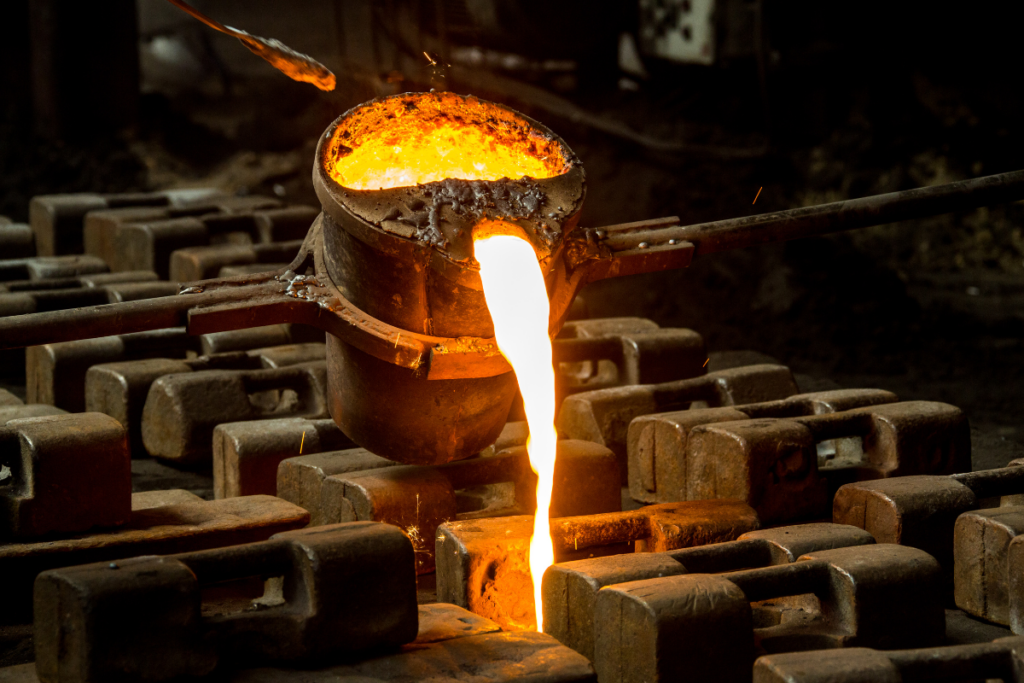At Arrow Off-Road, we understand that our customers prioritize quality, durability, and cost-effectiveness in their products. That’s why we constantly adopt innovative approaches to production that help our customers reach their objectives.
One such strategy gaining prominence is the conversion of fabricated assemblies to castings, or what we call “Fab to Cast”, when developing our products. This transformation involves replacing traditionally assembled components with casted counterparts, a switch that offers our customers several distinct advantages to help increase profits and build their businesses.
What’s The Difference Between Fabricated Assemblies And Castings?
Fabricated assemblies involve various processes to cut, bend, and assemble individual metal components into a final product through welding, fastening, or other means. This process has been a staple in metal manufacturing for decades.
Casting, however, is a process where combinations of molten materials such as iron, steel, aluminum, zinc, magnesium, and copper are poured into a mold, allowing it to solidify into the desired shape. This method is revolutionizing manufacturing in an ever-competitive market where production time, cost, and design flexibility are top of mind with manufacturers.
Read More: Our Capabilities
What Are The Advantages Of Castings Over Fabricated Assemblies?
Design Flexibility In Casting
Castings offer unparalleled design flexibility, allowing intricate and complex shapes that may be challenging or impossible to achieve through traditional fabrication methods. This flexibility enables designers to create more innovative and efficient product configurations with improved functionality, enhancing the final product’s overall performance. By going to cast, we are able to provide the customer a reduction in price and improved cycle time by reducing handling and tooling. This also results in a significant gain in quality by minimizing checks and the potential of operator error.
Increased Choice Of Materials
Material selection for fabrication may be limited to the material’s weldability. With casting, customers have greater flexibility in material selection, allowing manufacturers more material options based on performance requirements and product applications.
Material Use Optimization With Castings
Castings facilitate the optimal use of materials by enabling precise molding of components. This reduces waste from the cutting and shaping processes during fabrication assembly. Optimizing material use contributes to cost savings and aligns with sustainable manufacturing practices.
Improved Structural Integrity
The seamless nature of castings eliminates potential weak points that may arise from welding or fastening in fabricated assemblies. This improves structural integrity and durability while reducing the likelihood of failure under stress or load.
Reduced Chance Of Distortion
Many welders face material shrinkage and distortion challenges due to high thermal conductivity in materials such as stainless steel. There will be little to no risk of shrinkage and distortion with casting as the mold provides better control over the heating and cooling processes.
Cost-Efficiency Of Castings
Although the initial tooling costs for the casting process may be higher, the overall cost per unit decreases with large production runs. Eliminating labor-intensive secondary operations, such as welding and machining, further contributes to cost-effectiveness.
Consistency In Production Batches
Castings are one single component made from one tool, offering consistent and reproducible results that ensure uniformity across a production batch. This predictability also enhances the quality control process, reducing the likelihood of defects and improving the reliability of the final product.
Decreased Production Time
Production times are often drastically reduced because casting eliminates the need for secondary fabrication and assembly processes. This aspect of casting helps optimize scheduling at the customer’s manufacturing facility.
Weight Reduction
Castings often produce lighter components compared to fabricated assemblies, reducing shipping fees. This weight reduction is also advantageous in industries where minimizing weight contributes to overall performance.
As numerous as the advantages to casting can be, there may be instances where the traditional fabricated assembly process might be a better choice for your application. When you need help making an informed choice about which method is better for you, call the experts at Arrow Off-Road.
Arrow Off-Road: Your Partners In Quality Metalworking Solutions
Our talented team of designers and engineers is ready to perform a comprehensive analysis of your design to identify areas where casting benefits can be maximized and ensure that intricate details can be accommodated during the casting process. We’ll also provide valuable, proactive insights into material selection, tooling design, and process optimization.
Arrow Off-Road solutions also include a thorough life cycle cost analysis that takes into account the initial tooling costs and the long-term benefits in terms of reduced production costs, improved efficiency, and enhanced product performance.
Our products are subject to robust quality assurance protocols, including advanced inspection methods, rigorous testing, and establishing clear benchmarks for quality control throughout the fabricated assembly or casting process.
Working with the Arrow Off-Road team of experts helps you achieve the results you and your customers need every time.
Get A Project Quote From Arrow Off-Road For Your Next Design And Fabrication Project
Partner with Arrow Off-Road for precise machining, welding, casting, and fabrication solutions customized to your requirements and application. Experience the Arrow difference in quality, precision, and service for yourself by getting in touch with us today!
Read More: Contact Today!
